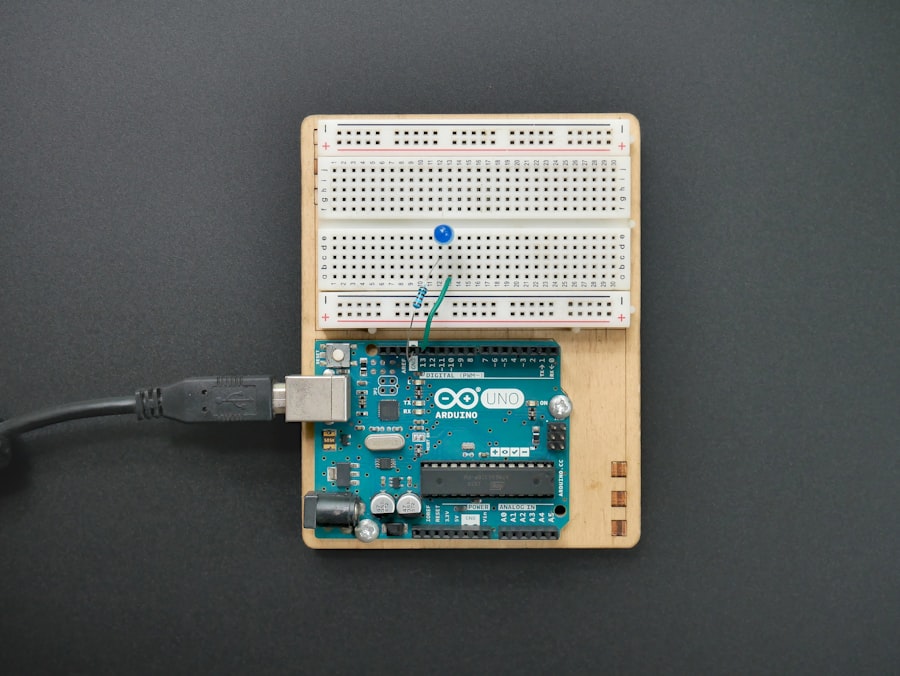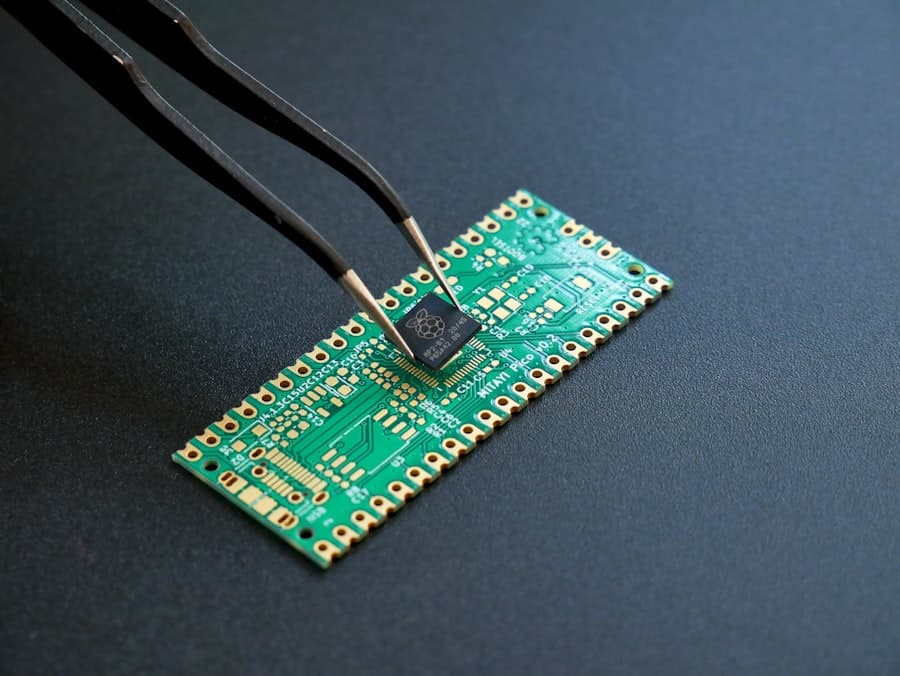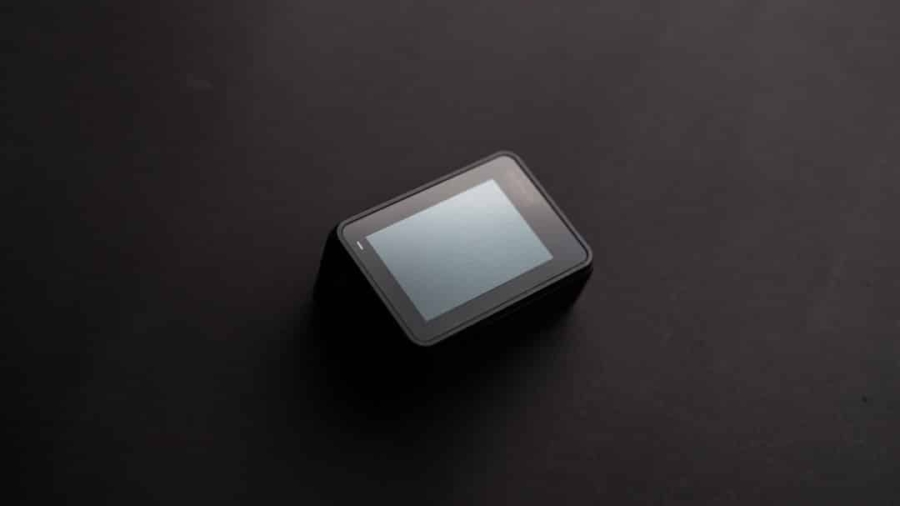Indoor air quality (IAQ) has emerged as a critical concern in both residential and commercial environments, particularly as people spend a significant portion of their lives indoors. The advent of the Internet of Things (IoT) has revolutionized the way we approach IAQ monitoring, enabling real-time data collection and analysis that was previously unattainable. IoT devices, equipped with advanced sensors, can continuously track various air quality parameters such as particulate matter, volatile organic compounds (VOCs), humidity, and temperature.
This technological evolution not only enhances our understanding of indoor environments but also empowers individuals and organizations to take proactive measures to improve air quality. The integration of IoT in IAQ monitoring is not merely a trend; it represents a paradigm shift in how we perceive and manage our indoor environments. With the increasing prevalence of respiratory diseases and allergies linked to poor air quality, the need for effective monitoring solutions has never been more pressing.
IoT devices facilitate a comprehensive approach to air quality management by providing actionable insights that can lead to healthier living and working conditions. As we delve deeper into the significance of real-time monitoring, the mechanisms behind IoT devices, and their benefits, it becomes evident that these technologies are essential for fostering environments conducive to well-being.
Key Takeaways
- Indoor air quality monitoring with IoT devices is becoming increasingly popular due to its ability to provide real-time data and insights.
- Real-time monitoring of indoor air quality is important for ensuring a healthy and safe environment for building occupants.
- IoT devices work by collecting data from various sensors and transmitting it to a central system for analysis and visualization.
- The benefits of using IoT devices for indoor air quality monitoring include improved accuracy, cost-effectiveness, and the ability to track trends over time.
- Common types of IoT devices used for indoor air quality monitoring include air quality sensors, CO2 monitors, and particulate matter detectors.
The Importance of Monitoring Indoor Air Quality in Real Time
Real-time monitoring of indoor air quality is crucial for several reasons, primarily related to health and safety. Poor IAQ can lead to a range of health issues, including respiratory problems, headaches, fatigue, and even long-term conditions such as asthma or chronic obstructive pulmonary disease (COPD). By continuously monitoring air quality, individuals can identify harmful pollutants and allergens before they reach dangerous levels.
Moreover, real-time data collection enables organizations to comply with health regulations and standards set by authorities such as the Environmental Protection Agency (EPA) or the World Health Organization (WHO). For businesses, maintaining good IAQ is not just a matter of compliance; it also impacts employee productivity and satisfaction.
Studies have shown that improved air quality can enhance cognitive function and reduce absenteeism. Therefore, real-time monitoring serves as a vital tool for organizations aiming to create a safe and productive work environment while adhering to regulatory requirements.
How IoT Devices Work to Monitor Indoor Air Quality

IoT devices designed for indoor air quality monitoring operate through a network of interconnected sensors that gather data on various environmental parameters. These sensors are typically equipped with advanced technologies such as electrochemical sensors, laser particle counters, and infrared sensors, which allow them to detect specific pollutants and measure their concentrations accurately. Once the data is collected, it is transmitted to a central hub or cloud-based platform via Wi-Fi or other communication protocols.
The data collected by these devices is processed and analyzed in real time, providing users with immediate feedback on their indoor air quality. Many IoT systems come with user-friendly interfaces that display this information in an easily digestible format, often through mobile applications or web dashboards. Users can monitor trends over time, receive alerts when pollutant levels exceed safe thresholds, and even access recommendations for improving air quality based on the data collected.
This seamless integration of data collection, analysis, and user engagement exemplifies the power of IoT technology in enhancing our understanding of indoor environments.
The Benefits of Using IoT Devices for Indoor Air Quality Monitoring
The benefits of employing IoT devices for indoor air quality monitoring are manifold. One of the most significant advantages is the ability to obtain real-time data that empowers users to make informed decisions regarding their indoor environments. For instance, if a sensor detects elevated levels of carbon dioxide (CO2), users can take immediate action by increasing ventilation or adjusting HVAC systems to ensure a healthier atmosphere.
This immediacy is crucial in preventing potential health issues associated with poor air quality. Additionally, IoT devices facilitate long-term data collection that can reveal patterns and trends in air quality over time. This historical data is invaluable for identifying recurring issues and assessing the effectiveness of interventions implemented to improve IAQ.
For example, a business may notice that air quality deteriorates during specific times of the day or under certain weather conditions. Armed with this knowledge, they can implement targeted strategies to address these fluctuations, ultimately leading to sustained improvements in air quality.
Types of IoT Devices Used for Indoor Air Quality Monitoring
A diverse array of IoT devices is available for monitoring indoor air quality, each designed to measure specific parameters or combinations thereof. One common type is the multi-sensor air quality monitor, which typically measures particulate matter (PM2.5 and PM10), VOCs, CO2 levels, temperature, and humidity all in one device. These comprehensive monitors provide a holistic view of indoor air quality and are suitable for both residential and commercial applications.
Another category includes specialized sensors that focus on specific pollutants. For instance, formaldehyde sensors are designed to detect this particular VOC commonly found in building materials and household products. Similarly, radon detectors monitor levels of this naturally occurring radioactive gas that can accumulate indoors and pose serious health risks.
Smart thermostats equipped with air quality monitoring capabilities also fall under this category; they not only regulate temperature but also provide insights into IAQ by analyzing environmental conditions.
Challenges and Limitations of Using IoT Devices for Indoor Air Quality Monitoring

Accuracy and Reliability of Sensors
Despite the benefits of IoT devices for indoor air quality monitoring, several challenges persist. One significant issue is the accuracy and reliability of the sensors used in these devices. While many consumer-grade monitors provide valuable insights, they may not always meet the precision required for scientific or regulatory purposes. Variability in sensor performance can lead to false readings or inconsistent data, which may undermine users’ trust in the technology.
Data Privacy and Security Concerns
Another challenge lies in data privacy and security concerns associated with IoT devices. As these devices collect sensitive information about indoor environments, there is a risk that this data could be accessed by unauthorized parties or misused for malicious purposes. Ensuring robust cybersecurity measures are in place is essential for protecting user data and maintaining confidence in IoT solutions.
Complexity of Integration and Technical Expertise
Additionally, the integration of multiple devices into a cohesive system can be complex, requiring technical expertise that may not be readily available to all users. This complexity can create barriers to adoption and limit the widespread use of IoT devices for indoor air quality monitoring.
Case Studies and Examples of Successful Indoor Air Quality Monitoring with IoT Devices
Numerous case studies illustrate the successful implementation of IoT devices for indoor air quality monitoring across various sectors. In educational settings, schools have adopted smart air quality monitors to ensure a healthy learning environment for students. For example, a school district in California installed multi-sensor monitors in classrooms to track CO2 levels and particulate matter.
The data collected allowed administrators to identify classrooms with poor ventilation and implement necessary changes, resulting in improved student performance and reduced absenteeism due to respiratory issues. In commercial settings, companies have leveraged IoT technology to enhance employee well-being and productivity. A tech firm based in New York City integrated smart air quality monitors throughout its office space to continuously assess IAQ parameters.
By analyzing the data collected over several months, the company identified specific areas where air quality was subpar due to inadequate ventilation systems. As a result, they made targeted improvements that not only enhanced employee comfort but also contributed to a noticeable increase in overall productivity.
The Future of Indoor Air Quality Monitoring with IoT Devices
The future of indoor air quality monitoring with IoT devices appears promising as technology continues to evolve at an unprecedented pace. Innovations such as artificial intelligence (AI) and machine learning are poised to enhance the capabilities of existing monitoring systems significantly. By analyzing vast amounts of data collected from various sources, AI algorithms can identify patterns that may not be immediately apparent to human observers.
This could lead to more accurate predictions regarding air quality fluctuations and enable even more effective interventions. Furthermore, as awareness of the importance of indoor air quality grows among consumers and businesses alike, demand for sophisticated monitoring solutions is likely to increase. Manufacturers are expected to respond by developing more advanced sensors with improved accuracy and reliability at competitive prices.
Additionally, integration with smart home systems will become more prevalent, allowing users to automate responses based on real-time air quality data seamlessly. In conclusion, the intersection of IoT technology and indoor air quality monitoring represents a significant advancement in our ability to create healthier living and working environments. As we continue to explore this dynamic field, it is clear that ongoing innovation will play a crucial role in shaping the future landscape of IAQ management.
If you are interested in technology that enhances daily life, you may also want to check out this article on Samsung Smartwatches Review.
Just like IoT devices that monitor indoor air quality, smartwatches provide real-time data and insights to help users make informed decisions.
FAQs
What is IoT?
IoT stands for Internet of Things, which refers to the network of physical devices, vehicles, home appliances, and other items embedded with electronics, software, sensors, and connectivity that enables them to connect and exchange data.
How do IoT devices help monitor indoor air quality in real time?
IoT devices are equipped with sensors that can measure various air quality parameters such as temperature, humidity, carbon dioxide levels, volatile organic compounds, and particulate matter. These devices can continuously collect and transmit this data to a central system, allowing for real-time monitoring and analysis of indoor air quality.
What are the benefits of using IoT devices for indoor air quality monitoring?
Using IoT devices for indoor air quality monitoring provides several benefits, including the ability to detect and address air quality issues in real time, optimize ventilation and HVAC systems for energy efficiency, and track air quality trends over time to make informed decisions about indoor environmental quality.
What are some common IoT devices used for indoor air quality monitoring?
Common IoT devices used for indoor air quality monitoring include air quality sensors, smart thermostats, air purifiers with built-in sensors, and HVAC systems equipped with IoT capabilities. These devices can be integrated into a centralized monitoring and control system for comprehensive indoor air quality management.
How can IoT devices help improve indoor air quality?
By providing real-time data on indoor air quality parameters, IoT devices enable proactive measures to improve indoor air quality, such as adjusting ventilation systems, identifying sources of indoor air pollution, and implementing targeted air purification solutions. This proactive approach can lead to healthier and more comfortable indoor environments.

